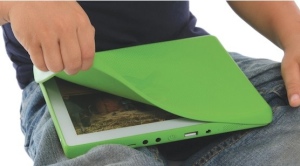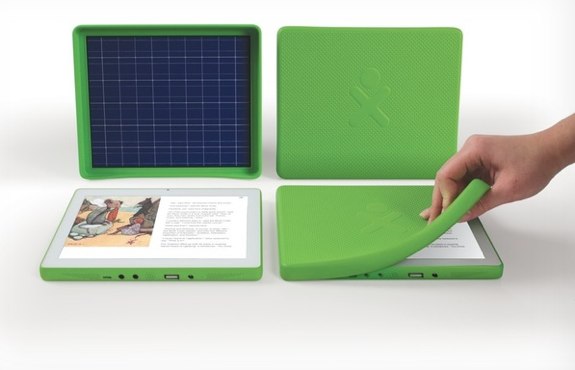At the flashy Las Vegas gathering this week, the Consumer Electronics Show, there will likely be a lot of tablets unveiled, but none are as eagerly anticipated as the OLPC XO 3.0, a tablet version of the famously inexpensive and rugged laptop from One Laptop Per Child founder Nicholas Negroponte.
The tablet release comes after bruising criticism of the highly anticipated laptop several years ago, which some in the industry called a failure. One of the main criticisms was the laptop's lack of mobility: "Cell phones are far more popular as the means to connect to the net in much of the Third World and cell-phone type devices rather than cute little laptops might have made much more sense," writes BusinessWeek's Bruce Nussbaum.
The new tablet, designed to be an educational device for students in the developing world, where electricity and broadband access is scarce, addresses this to some extent. It uses very little power: the battery lasts eight to 10 hours and can be recharged with either a hand-crank or with a solar panel that doubles as the tablet’s cover. The XO 3.0 actually comes with two covers, one of which contains a four-watt solar panel that can be placed in the sun to recharge, then reconnected in order to power the tablet.
There’s great interest and excitement in the development of low-cost tablets, for lots of reasons. A few months ago, the $35 Aakash tablet was released, and according to The New York Times, Datawind -- the manufacturer behind the Aakash tablet -- has received some 1.4 million orders. But because the company was unprepared to meet the demand, it has stopped taking orders, and might be struggling to meet the orders that were already made. Even more troubling, many of the early reviews of the Aakash tablet have been incredibly poor: the battery life is just an hour or two, the software is sluggish, the touchscreen "sticky."
While the inability to build a quality $35 tablet isn't that surprising, it's important to remember that even the popular $199 Android tablet Amazon Kindle Fire has had its share of negative reviews. So when it comes to the XO 3.0, "If they can really pull off the $100 price point, it will be the most well-built tablet under $200," points out The Verge's Johanna Stern, who's had a hands-on look at the tablet.



